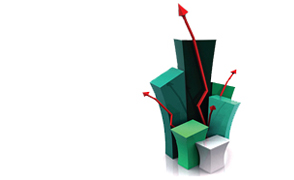You spent countless hours designing a website with fantastic
colors, attractive images and beautiful layout but it failed to
click? Some of the reasons could be lack of planning or
inappropriate web design elements. A well thought out site never
fails to click. To avoid this kind of situation it is very
important for a web designer to plan things in advance and
foresee the impact of the site. Ask a couple of questions:
Who is the target audience?
What is the purpose of the site?
What all functionalities are to be included?
If you have done your homework and have the capability to come
up with a snazzy website design, you will definitely make your
first impression a lasting one.
Once things are planned, it is time for the web design elements
to be taken care such as:
- Layout: Simplicity is the key here. Keep
the layout simple and straightforward. This will help you to
build a site that is user friendly and accessible. Place the
things that are most important and functionally basic to the
site’s purpose at the forefront. Avoid clutter because it
distracts the user.
- Navigation bars: Keep the navigation of
your web site really simple. It is one of the determining
factors to ensure traffic to the site. If a first time user of
your site finds the navigation easy in the first couple of
minutes of his contact, he will definitely come back.
- Place the navigation menus on top or left of the home page
because almost all the sites on www follow this pattern. This is
where most of the users are used to look for menus.
- Main menu should be placed on all the pages at the same
place and try to keep the navigation same all through the pages.
- Avoid scrolling horizontal.
- Always include a sitemap.
- Color: Site that is visually pleasing is a
sure shot. So, always use eye-pleasing colors. Don’t let your
personal choices take over the required color scheme that goes
with the taste and purpose of the site in question.
- White spaces also make great impact. Use a lot of white
space to emphasize a few things.
- Too much color, words or clutter may result in sensory
overload of the user.
- Readability: No reader on the net will make
an effort to read the text that is not comfortably readable,
even if your site is very useful and beautifully laid. So do not
loose out on this front and follow some standard norms of font
size and line length.
- Font size and type: Optimal font size is
12-13 pts. Use professional font types like Verdana, Arial, and
Helvetica. These are system default fonts. Avoid using fancy
fonts like Comic Sans and the ones that are externally added.
- Always use darker text on light background. Light text on
darker background is hard to read and has a blinding effect.
- Graphics: Graphics are a powerful tool to
communicate. They can say a million words in lesser space as
compared to the actual text. But use them judiciously because
too many images increase the load time. So make sure that you
optimize your images before adding them to the website. Use a
“gif image” if it has smaller number of colors. “Jpeg” is
advisable if there is more of text to be incorporated into an
image.
- Download time: More the loading time,
lesser is the number of audience to your website. So try to keep
the page size as small as possible. Always keep in mind, there
are many broadband users but there still are people who use dial
ups. So try to minimize the size of your web pages but still
maintaining the quality of the images.
- Testing: This can be a very crucial factor
since almost all the users of your website will be having a
different combination of software and hardware available on
their system. So it’s advisable to check your site on as many as
varied computers. And also if there is any malfunction or bug on
your site, its better to know it yourself rather than people
telling you (if someone is bothered at all).
Above mentioned points can enhance your website presence as
beautifully as possible.






